Filter by
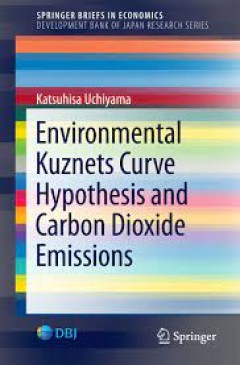
Environmental Kuznets Curve Hypothesis and Carbon Dioxide Emissions
This book investigates the relationship between environmental degradation and income, focusing on carbon dioxide (CO2) emissions from around the world, to explore the possibility of sustainable development under global warming. Although many researchers have tackled this problem by estimating the Environmental Kuznets Curve (EKC), unlike the approach to sulfur dioxide emissions, there seems to …
- Edition
- -
- ISBN/ISSN
- 978-4-431-55921-4
- Collation
- 5 b/w illustrations, 1 illustrations in colour
- Series Title
- -
- Call Number
- -
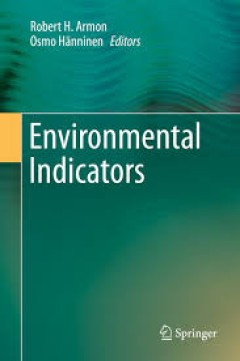
Environmental Indicators
Environmental indicators are the first line of warning against hazards caused by humans or nature catastrophes to prevent diseases and death of living organisms. The present book covers a large variety of environmental indicators from physical-chemistry through economical, bioinformatics, electromagnetic irradiation and health aspects, all dealing with environmental pollution. This volume has b…
- Edition
- -
- ISBN/ISSN
- 978-94-017-9499-2
- Collation
- 75 b/w illustrations, 161 illustrations in colour
- Series Title
- -
- Call Number
- -

Environmental Implications of Recycling and Recycled Products
This book includes details on the environmental implications of recycling, modeling of recycling, processing of recycled materials, recycling potential of materials, characterisation of recycled materials, reverse logistics, case studies of recycling various materials etc.
- Edition
- -
- ISBN/ISSN
- 978-981-287-643-0
- Collation
- 48 b/w illustrations
- Series Title
- -
- Call Number
- -
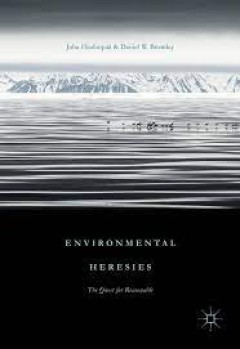
Environmental Heresies The Quest for Reasonable
This book systematically deconstructs the pervasive and counter-productive discourse surrounding environmental policy. The authors argue that environmental policy problems are always framed such that conflict is inevitable—a particular project or policy must be accepted versus a specific environmental asset that must be protected. Over the course of 12 chapters, the authors demonstrate that c…
- Edition
- -
- ISBN/ISSN
- 978-1-137-60083-7
- Collation
- 8 b/w illustrations
- Series Title
- -
- Call Number
- -

Environmental Finance and Investments
This textbook provides an introduction to environmental finance and investments. The current situation raises fundamental questions that this book aims to address. Under which conditions could carbon pricing schemes contribute to a significant decrease in emissions? What are the new investment strategies that the Kyoto Protocol and the emerging carbon pricing schemes around the world should pro…
- Edition
- -
- ISBN/ISSN
- 978-3-662-48175-2
- Collation
- 36 b/w illustrations, 36 illustrations in colour
- Series Title
- -
- Call Number
- -

Environmental Epigenetics
This book examines the toxicological and health implications of environmental epigenetics and provides knowledge through an interdisciplinary approach. Included in this volume are chapters outlining various environmental risk factors such as phthalates and dietary components, life states such as pregnancy and ageing, hormonal and metabolic considerations and specific disease risks such as cance…
- Edition
- -
- ISBN/ISSN
- 978-1-4471-6678-8
- Collation
- 5 b/w illustrations, 33 illustrations in colour
- Series Title
- -
- Call Number
- -
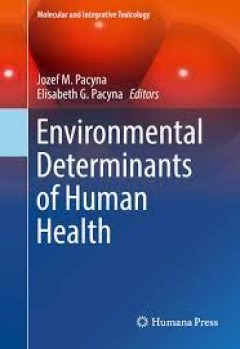
Environmental Determinants of Human Health
Polluted air and contaminated food and water are major causes of human health deterioration, but public health policy has long struggled to effectively address these concerns. This timely book--written for a wide audience of policy makers, researchers, and general readers--synthesizes what we already know about environmental hazards, identifies the gaps in our knowledge, and provides a roadmap …
- Edition
- -
- ISBN/ISSN
- 978-3-319-43142-0
- Collation
- 17 b/w illustrations, 15 illustrations in colour
- Series Title
- -
- Call Number
- -
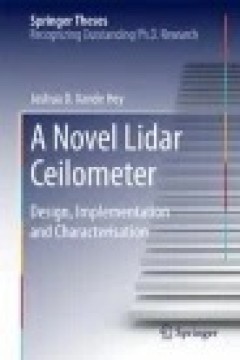
A Novel Lidar Ceilometer: Design, Implementation and Characterisation
In this thesis, a new lidar (light detection and ranging) ceilometer capable of monitoring cloud base and sensitive to boundary layer aerosols is introduced. The key to this novelty lies in its divided-lens design that addresses a classical lidar problem of balancing transmitter-receiver overlap and signal-to-noise ratio, along with a method for characterizing overlap in the laboratory. Enhance…
- Edition
- Ed. 1
- ISBN/ISSN
- 978-3-319-36601-2
- Collation
- -
- Series Title
- Springer Theses
- Call Number
- 621.366 HEY n
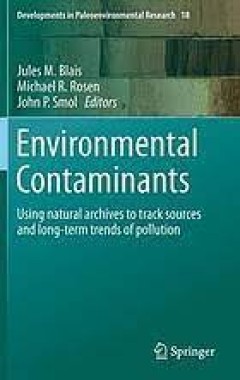
Environmental Contaminants Using natural archives to track sources and long-…
The human footprint on the global environment now touches every corner of the world. This book explores the myriad ways that environmental archives can be used to study the distribution and long-term trajectories of chemical contaminants. The volume first focuses on reviews that examine the integrity of the historic record, including factors related to hydrology, post-depositional diffusion, an…
- Edition
- -
- ISBN/ISSN
- 978-94-017-9541-8
- Collation
- 58 b/w illustrations, 44 illustrations in colour
- Series Title
- -
- Call Number
- -

Environmental Biomedicine
The book presents the latest advances in research into health effects of air pollution, with heavy motor vehicle traffic or cigarette smoke as the exemplar of pollution. The airways are the first-line defense system against pollution. The book focuses on respiratory ailments underlain by inflammation, increased susceptibility to infection, particularly acquired during harsh environmental condit…
- Edition
- -
- ISBN/ISSN
- 978-3-319-14690-4
- Collation
- 20 b/w illustrations, 4 illustrations in colour
- Series Title
- -
- Call Number
- -
 Computer Science, Information & General Works
Computer Science, Information & General Works  Philosophy & Psychology
Philosophy & Psychology  Religion
Religion  Social Sciences
Social Sciences  Language
Language  Pure Science
Pure Science  Applied Sciences
Applied Sciences  Art & Recreation
Art & Recreation  Literature
Literature  History & Geography
History & Geography